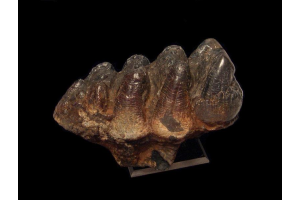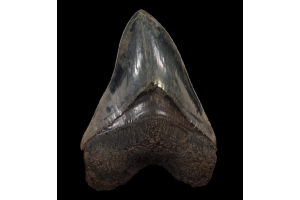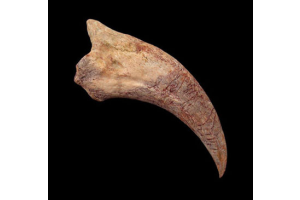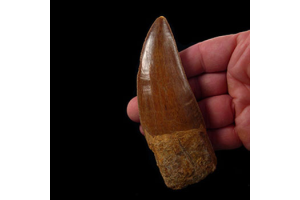Page 2 - Home Page Latest Post
- - August 11, 2025
Fossils are more than just ancient remnants of prehistoric life—they're windows into Earth's past, pieces of natural art, and, for many collectors, valuable investments. But while you can find fossils for sale including fascinating specimens like ammonites, trilobites, and marine reptile teeth—some fossils can fetch tens or even hundreds of thousands of dollars.
So, what exactly drives the price of a fossil sky-high? Let’s break it down by examining the science, the rarity, and the market forces behind the growing fascination—and value—of fossils.
The Scientific Value: More Than Just Old Bones
Fossils are often priced based on their scientific significance. While not every fossil is destined for a museum, those that shed new light on evolutionary history, species development, or geologic events can command high prices. Specimens representing new or rare species, like a nearly complete dinosaur skeleton or a fossil with unusual pathology (deformities or growth abnormalities), are often considered
- - August 11, 2025
Have you ever wondered what it would be like to hold a piece of the Ice Age in your hands? Imagine discovering a massive tooth or jawbone that once belonged to a giant bear that lived more than 25,000 years ago. That is the magic of cave bear fossils. These ancient remains continue to spark curiosity among scientists, collectors, and nature lovers worldwide.
So how rare are they? And why do they matter so much to science? Let’s explore the world of cave bears and the fossils they left behind.
Who Were the Cave Bears?
Cave bears, scientifically known as Ursus spelaeus, inhabited Europe during the Ice Age. These massive creatures were bigger than most modern bears. Some males weighed over 1,000 pounds and stood more than 10 feet tall when on their hind legs.
They got their name because they often lived and died inside caves. These shelters protected their bones from weather and animals, which helped some remains survive for thousands of years. Thanks to this natural protection, we now have
- - August 11, 2025
At first glance, a hammerhead shark tooth might just look like a sharp, fossilized relic. But dig a little deeper, and you’ll find it’s so much more; it’s a piece of a vast and intricate puzzle that spans millions of years. These teeth aren’t just souvenirs of ancient creatures; they’re keys unlocking mysteries about evolution, climate change, and life beneath the waves long before humans ever existed.
This blog takes you beyond the surface to explore some of our most remarkable fossil discoveries, including hammerhead shark teeth and jaw-dropping specimens from multiple Sphyrna species, such as the Great Hammerhead.
With teeth dating from the Eocene all the way to the Pleistocene, these fossils offer unique insights into how these iconic sharks adapted, thrived, and shaped their underwater world. Ready to uncover what a shark’s tooth can teach us? Let’s dive in.
The Hammerhead’s Evolutionary Journey in Fossil Teeth
Hammerhead sharks belong to the genus Sphyrna, easily recognized by the
- - August 11, 2025
Few fossils spark curiosity and admiration quite like those of sharks. Their unmistakable shapes, razor-sharp edges, and deep historical significance make them among the most fascinating fossils to discover and collect. But what exactly makes shark teeth so prevalent in the fossil record? To answer this, we must explore a unique combination of shark biology, fossilization processes, and the role these teeth have played throughout human history.
From ancient tools to symbols of protection, real shark teeth for sale connect us to prehistoric oceans and human culture in a way few other fossils can.
The Natural Abundance of Shark Teeth in Fossils
The key to understanding the abundance of shark teeth in the fossil record begins with the sharks themselves. Unlike many animals, sharks have skeletons made entirely of cartilage, a flexible, lightweight material that does not fossilize easily. This means that aside from their teeth, sharks leave behind very few fossil traces.
However, shark teeth
- - August 11, 2025
If you’re fascinated by fossils or love ancient sharks, the Parotodus tooth is one of the most exciting finds you can own. These rare shark teeth come from an extinct species called the False Mako shark and are treasured by collectors worldwide. But how do you find a real one? And what should you know before buying? This blog will guide you through everything about getting a genuine Parotodus tooth for sale online.
What Makes the Parotodus Tooth Unique?
The Parotodus tooth stands out because it comes from a rare shark species that lived millions of years ago. Unlike common shark teeth, these are large, sharp, and have thick roots. Their age traces back to the Miocene and Pliocene periods, which means they are often 3 to 5 million years old.
Collectors value these teeth because they are extremely rare, and each tooth tells a story of the ancient seas. If you want to add a unique item to your fossil collection, the Parotodus tooth is a top choice.
How to Spot a Real Parotodus Tooth?
- - August 11, 2025
When we think about the story of life on Earth, the oceans often seem like an endless, mysterious blue expanse, a place where countless creatures have thrived, vanished, and evolved over millions of years.
Among the most fascinating chapters in this grand saga is the history of whales, colossal marine mammals whose fossil record unlocks secrets far beyond their massive bodies. Whale fossils are not just relics of giant creatures lost to time; they are pivotal clues that help scientists piece together the intricate puzzle of marine biodiversity history.
Understanding these fossils of whale tooth for sale offers a window into the evolutionary pathways that shaped the ocean’s ecosystems and highlights the dynamic nature of life beneath the waves.
Whale Fossils: A Unique Record of Evolutionary Innovation
Whales represent one of the most extraordinary evolutionary journeys in the natural world. Their fossils provide a rare and detailed record of how mammals transitioned from terrestrial life
- - August 11, 2025
There’s something timeless and mesmerizing about ammonites. These extinct marine creatures left behind intricate spiral shells that, millions of years later, continue to inspire awe and admiration. At Buried Treasure Fossils, we proudly offer a thoughtfully curated and expansive collection of ammonite fossils that celebrate nature’s ancient design. Each fossil tells a silent story from Earth’s distant past—one that you can hold, admire, and display.
Whether you’re an experienced fossil enthusiast or a newcomer fascinated by natural history, our offerings provide an extraordinary opportunity to connect with the prehistoric oceans that once covered our planet.
A Rich Diversity from Around the World
Our collection is as diverse as the places these ancient creatures once roamed. We carry ammonites from a wide range of globally recognized fossil regions including France, Madagascar, Morocco, and Russia. Each origin brings its own distinctive qualities, shaped by geological forces unique to
- - August 11, 2025
Fossils are more than geological remnants — they are glimpses into lives long vanished. While most fossil collectors look to land-based giants like dinosaurs, the sea holds its own kind of mystery. The deep, shadowed world beneath the waves once teemed with giants of another kind — whales that ruled the ancient oceans with quiet command.
Tucked away in the silt of prehistoric seabeds, some of these creatures left behind relics that survived millennia: their teeth. For collectors and marine history enthusiasts, the opportunity to buy sperm whale tooth specimens offers a tactile connection to one of Earth’s most enigmatic predators.
What Makes a Sperm Whale Tooth Fossil Special?
Sperm whales are famous for their deep-sea dives and formidable size. But their story doesn’t begin in modern times. The fossilized teeth commonly found today often belong to ancient relatives — massive marine mammals that lived millions of years ago. Their long, conical teeth, used for gripping and tearing squid,
- - August 11, 2025
When it comes to nature’s most impressive predators, few creatures capture the imagination quite like the great white shark. With their massive size, remarkable speed, and powerful jaws, these apex predators have been fine-tuned by evolution to dominate the oceans. But among their many lethal adaptations, great white shark teeth stand out as perhaps the most iconic—and arguably most effective—kill tools in the natural world.
But are they truly the most perfect? To answer that, we’ll need to look deeper into the biomechanics, function, and comparisons with other fearsome predators both in and out of the water.
What Makes Great White Shark Teeth So Remarkable?
Great white sharks, scientifically known as Carcharodon carcharias, have evolved a set of teeth that are perfectly suited to their hunting lifestyle. Each tooth is wide, triangular, and heavily serrated—designed not just to bite, but to saw through flesh and bone with astonishing efficiency.
These teeth can grow up to 3 inches long
- - August 11, 2025
When you hold a fossilized shark tooth in your hand, you’re not just gripping a hardened shard of ancient history, you’re clutching a direct, tangible connection to a world millions of years gone by. These teeth are more than just relics; they are silent storytellers that reveal secrets about creatures that once ruled the oceans long before humans walked the earth.
But what exactly do fossilized shark teeth tell us about prehistoric sharks? And why do these teeth remain some of the most sought-after invaluable fossils today? If you’ve ever wondered how these simple fossil shark teeth for sale can tap into a vivid picture of ancient seas and apex predators, you’re about to discover the compelling answers.
In this article, we will explore into the fascinating world of fossilized shark teeth, unraveling the extraordinary insights they provide into the anatomy, behavior, evolution, and environment of prehistoric sharks.
Fossilized Shark Teeth: Nature’s Time Capsules
Sharks have been swimming







